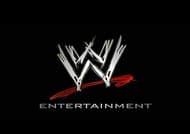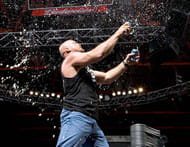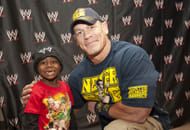If you are a young boy aged between 12-13 years and happen to be a WWE fan from India, you are bound to be frowned upon by the society. Everybody is so puzzled and flummoxed as to why at such a young age you are attracted towards wrestling. Leave the society, even your own parents would have certain apprehensions about it and rightfully so too. At the crucial age of 12-13, your mind would still be naive and lack the ability to decipher the thin line between right and wrong. So, you will need the guidance of your parents to understand certain things better. To find out if there is a negative influence or not, let us first understand what WWE is and how it functions.
Working model of the WWE
WWE is basically a wrestling bout where two athletes or teams compete against each other. But WWE takes certain “liberties” when it comes to the rules associated with traditional wrestling. One such liberty is that the winner is determined before the start of bout itself. But the moves performed during the match are legitimate and requires trained athletes.
Insane Vince McMahon ideas that got canceled - Watch Here!
Another liberty that WWE uses is that, two competing wrestler’s converse with each other during the course of match. This is cleverly done when the two opponents come close to each other during a match. The wrestlers talk to each other regarding what the next move is going to be. In fact, the referee also plays a role during the course of a match. A referee not only acts as an enforcer of the rules and renders decisions, but he is also responsible for controlling the flow of the match and for relaying information or instructions from backstage officials to the wrestlers.
Another important feature that the WWE uses is to brand a wrestler either as a “Heel” or as a “Baby face/face”. A wrestler who is a Heel displays the qualities of a bad guy, who cheats his way to win and usually disses the crowd while cutting a promo; essentially a Heel is projected as a bad guy. On the other hand, a baby face displays the qualities of a good guy, is shown to be honest, and usually pleases the crowd with his “heroic” antics. A heel, almost always faces a baby face, only in extreme circumstances does a heel face a heel or a face wrestles another face.
This is pretty how things work at the WWE. Everything is kind of orchestrated; in fact writers are hired by WWE to create interesting angles between wrestlers to make it entertaining for the audiences. It is almost like watching a movie, expect that the WWE the characters remain the same even after 3 hours!
So, where does the negative influence come into the picture?
The negative aspect
The negative aspect creeps up from the liberty taken by WWE to transform wrestling as a sport into wrestling as an entertainment. This entertainment aspect was at its highest during the attitude era, where WWE transformed itself from a family – friendly product to a more adult oriented product. This concept of attitude era was spearheaded by Vince McMahon and Vince Russo. The creative team of the WWE presented a “street fight” kind of wrestling, where the wrestlers were expected to be mean to the maximum possible extent and this concept clicked with the fans too as they began to favour the heel over a face. During this era the wrestling matches were sort of extreme with more blood being involved in most of the matches, expletive words were used more often by the wrestlers and divas were used as sex objects to please the audience. This restricted the range of audience watching WWE, the intended audience being in the age group of somewhere between 18 – 34 years. It was during this period that the idea of WWE having a negative influence on the society really gained steam. Especially in a country like India where there are no strict rules governing the broadcast of televised programmes. In a country like USA, every televised show is given a rating to help people differentiate which is family oriented and which is not. This has majorly contributed in WWE gaining a bad name. Nonetheless, the concept of attitude era was a runaway success for the WWE. WWE even went public during this period in 1999.
The PG Era
Gradually, WWE softened its programming content, moving from violence heavy, adult themed wrestling to a more family oriented form of wrestling. This move paved way for a rating of TV-14, which resulted in 60% of the audience being women and children. This has helped WWE to gain a wider audience and also to take up certain social issues like “Be a Star” campaign which focuses on reducing bullying and its alliance with the Make a Wish foundation, where WWE superstars grant a wish to a children who are critically ill. WWE have also tied up with Susan G. Komen to promote breast cancer awareness. As part of the campaign, WWE adorned their sets with pink ribbons, uses pink ropes on the ring and the merchandise of all WWE superstars are customized to the colour pink, and all the proceeds from the sale of these merchandise are donated to Susan G. Komen ‘s organization every year.
One has to agree that from the past 5 years or so WWE has really made an effort to reach out to a wide range of audience and has clearly succeeded in its endeavour. At present, WWE is broadcast in more than 150 countries and 30 languages and reaches more than 650 million homes worldwide. By participating in various social causes, WWE has also shown us that it cares for the society at large. To substantiate it, it has toned down its form of wrestling which has enabled it to reach a wide demography.
So, yes WWE was facing society’s criticism until a few years ago. The WWE has indeed observed the criticism it was subjected to and has analyzed the way forward and has rightly moved into the PG era. Though a lot of hardcore wrestling fans detest the PG era and prefer the attitude era, we have to understand that in today’s world the concept of attitude era just cannot survive in the long term.
Make Sportskeeda your preferred choice for WWE content by clicking here: Source preferences




